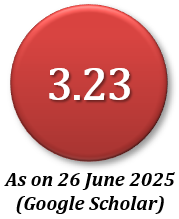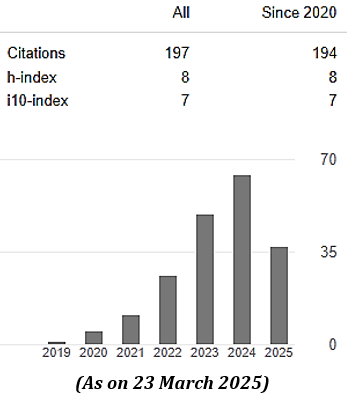Importance of Stress and Temperature-Dependent Permeability of Rocks and its Application in Underground Nuclear Waste Disposal
Abstract
Water flow is an essential factor in the sealability of any underground cavern, including those for nuclear waste disposal, and is significantly affected by the permeability of the rock. The permeability of rocks is affected by various factors, including stress and temperature. The rock stress changes by excavating a cavern, and rock temperature changes by decay heat from nuclear waste, and the temperature change induces thermal stress. Therefore, water flow around such caverns must be evaluated considering the effects of stress and temperature. Numerical analyses of water migration around underground nuclear waste disposal caverns have been carried out. However, studies considering the stress and temperature-dependent permeability may not be published yet. To demonstrate the necessity to consider the stress and temperature-dependency in permeability, equations that represent the post-failure permeability as a function of average effective stress and temperature were proposed. The water inflow was numerically calculated for a simple underground nuclear waste disposal cavern with or without stress and temperature dependency which showed the significance of the dependency. Also, the importance of rock types was demonstrated by considering the three rocks of granite, sandstone, and tuff for a full-scale underground radioactive disposal site for the stress and temperature-dependent permeability. A high sealability could be expected for granite and sandstone but not for the tuff. Introducing the stress and temperature-dependent permeability could contribute to the thoughtful design of an underground repository for radioactive waste disposal considering rock types.
Downloads
References
Alam, B., Fujii, Y., Fukuda, D., Kodama, J., & Kaneko, K. (2015). Fractured Rock Permeability as a Function of Temperature and Confining Pressure. Pure and Applied Geophysics, 172, 2871-2889. DOI: https://doi.org/10.1007/s00024-015-1073-2
Alam, B., Niioka, M., Fujii, Y., Fukuda, D., & Kodama, J. (2014). Effects of Confining Pressure on the Permeability of Three Rock Types under Compression. International Journal of Rock Mechanics and Mining Sciences, 65, 49-61. DOI: https://doi.org/10.1016/j.ijrmms.2013.11.006
Bian, H. B., Jia, Y., Armand, G., Duveau, G., & Shao, J. F. (2012). 3D numerical modelling thermo-hydromechanical behaviour of underground storages in clay rock. Tunneling and Underground Space Technology, 30, 93-109. DOI: https://doi.org/10.1016/j.tust.2012.02.011
Brace, WF., Walsh, JB., & Frangos, WT. (1968). Permeability of granite under high pressure. Journal of Geophysical Research
,2225–2236. DOI:https://doi.org/10.1029/JB073i006p02225
Dhakal, G., Yoneda, T., Kato, M., & Kaneko, K. (2002). Slake durability and mineralogical properties of some pyroclastic and sedimentary rocks. Engineering Geology, 65, 31–45. DOI: https://doi.org/10.1016/S0013-7952(01)00101-6
Doi, S. (1963). Petrological and petrochemical studies of welded tuff. Report of Geological Survey Hokkaido, 29, 30–103.
IAEA (2011). Geological disposal facilities. Vienna: International atomic energy agency.
Kwon, S., Cho, WJ., & Lee JO. (2013). An analysis of the thermal and mechanical behavior of engineered barriers in a high-level radioactive waste repository. Nuclear engineering and Technology, 45(1), 41-52.
DOI: https://doi.org/10.5516/NET.06.2012.015
Lin, W., & Takahashi, M. (2008). Anisotropy of strength and deformation of Inada granite under uniaxial tension. Chinese Journal of Rock Mechanics and Engineering, 12, 2463–72.
Mufundirwa, A., Fujii, Y., Kodama, N., & Kodama, J. (2011). Analysis of natural rock slope deformations under temperature variation: A case from a cool temperate region in Japan. Cold Regions Science and Technology, 65 (3), 488-500. DOI: https://doi.org/10.1016/j.coldregions.2010.11.003
Yu, L., Chen, G. J., & Weetjens, E. (2017). A solution around a backfilled cavity in a low-permeability poroelastic medium with application in in situ heating tests. International Journal of Numerical Analysis Methods in Geomechanics, 41(3), 3-29. DOI: https://doi.org/10.1002/nag.2542
Daniels, K. A., Harrington, J. F., Zihms, S. G., & Wiseall, A. C. (2017). Bentonite permeability at elevated temperature. Geosciences (Switzerland), 7(1).
DOI: https://doi.org/10.3390/geosciences7010003
Hodgk1nson, D. P. (1980). A mathematical model for hydrothermal convection around a radioactive waste depository in hard rock. In Annals of Nuclear Energy (Vol. 7). Pergamon Press Ltd.
Liu, Z., Shao, J., Xie, S., & Secq, J. (2015). Gas permeability evolution of clayey rocks in process of compressive creep test. Materials Letters, 139, 422–425.
DOI: https://doi.org/10.1016/j.matlet.2014.10.139
Ogata, S., Maeda, Y., Fukuda, D., Yasuhara, H., Inui, T., & Kishida, K. (2021). A novel framework for coupled THMC analysis employing explicit rock fracture. IOP Conference Series: Earth and Environmental Science, 861(3). DOI: https://doi.org/10.1088/1755-1315/861/3/032053
Onoe, H., Ishibashi, M., Ozaki, Y., & Iwatsuki, T. (2021). Development of modeling methodology for hydrogeological heterogeneity of the deep fractured granite in Japan. International Journal of Rock Mechanics and Mining Sciences, 144.
DOI: https://doi.org/10.1016/j.ijrmms.2021.104737
Philipp, T., Amann-Hildenbrand, A., Laurich, B., Desbois, G., Littke, R., & Urai, J. L. (2017). The effect of microstructural heterogeneity on pore size distribution and permeability in Opalinus Clay (Mont Terri, Switzerland): Insights from an integrated study of laboratory fluid flow and pore morphology from BIB-SEM images. Geological Society Special Publication, 454 (1), 85–106. Geological Society of London. DOI: https://doi.org/10.1144/SP454.3
Plúa, C., Vu, M. N., Armand, G., Rutqvist, J., Birkholzer, J., Xu, H., Guo, R., Thatcher, K. E., Bond, A. E., Wang, W., Nagel, T., Shao, H., & Kolditz, O. (2021). A reliable numerical analysis for large-scale modelling of a high-level radioactive waste repository in the Callovo-Oxfordian claystone. International Journal of Rock Mechanics and Mining Sciences, 140.
DOI: https://doi.org/10.1016/j.ijrmms.2020.104574
Sellin, P., & Leupin, O. X. (2014). The use of clay as an engineered barrier in radioactive-waste management - A review. Clays and Clay Minerals, 61(6), 477–498.
DOI: https://doi.org/10.1346/CCMN.2013.0610601
Urpi, L., Rinaldi, A. P., Rutqvist, J., & Wiemer, S. (2019). Fault Stability Perturbation by Thermal Pressurization and Stress Transfer Around a Deep Geological Repository in a Clay Formation. Journal of Geophysical Research: Solid Earth, 124(8), 8506–8518.
DOI: https://doi.org/10.1029/2019JB017694
Zhang, K., Croisé, J., & Mayer, G. (2011). Computation of the Couplex-Gaz exercise with TOUGH2-MP: Hydrogen flow and transport in the pore water of a low-permeability clay rock hosting a nuclear waste repository. Nuclear Technology, 174(3), 364–374. DOI: https://doi.org/10.13182/NT11-A11746
MIJST follows the open access policy.

This work is licensed under a Creative Commons Attribution-NonCommercial 4.0 International License. This allows anyone to copy, share, distribute, and modify the work for non-commercial purposes, where the original work and source should be properly credited.
















